As sad as it may be, there are many crimes in the world. In most cases, they are solved and the culprit is punished, but it happens that the investigation reaches a dead end. The murderer or robber is not found, and it remains a mystery how the crime was committed. In this article, we will bring to your attention several incidents that can be called the most mysterious crimes. And no matter how much investigators and private detectives try to find out the truth, some of them remain unsolved for decades.
1. The disappearance of Ashley Freeman and Lauria Bible

Welch, Oklahoma, December 1999. Teenagers Ashley Freeman and Lauria Bible disappeared on Ashley's 16th birthday, which they celebrated with a sleepover in her mobile home. The Freemans' home caught fire the next day, and the bodies of Ashley's parents were found inside. Both had been shot in the head before being set on fire. The girls have never been found.
2. Children who disappeared in smoke

Fayetteville, West Virginia, December 1945. The Sodder family of 10 children were sleeping peacefully when a fire broke out in their home at 1 a.m. One of the sons was missing, four children escaped with their parents, and five never made it out of the house. George, the father, tried to go back into the house to look for the remaining five children. But the ladder was gone, his truck wouldn’t start, and the water in the rain barrel had turned to ice. The scariest part is that the children’s remains were never found. Not even bones were found, and complete cremation was simply impossible in this situation. The children were gone and were never found.

Chicago, September 1982. Mary Kellerman, 12, died after taking a Tylenol tablet for a cold. The cause of death was the deliberate addition of potassium cyanide to a batch of pills. In addition to Mary, six other people died at the hands of an unknown poisoner. The poisoned pills were contained in packages from different manufacturers, leading police to conclude that someone was buying the pills, replacing them with the poisoned ones, and returning them to the store shelves. The poisoner was never found.
4. The Disappearances of Brian Shaffer

Columbus, Ohio, April 2006. Brian was celebrating the end of spring break with friends at a bar near the university where he was studying to become a doctor. Despite being surrounded by friends and surveillance cameras, he disappeared without a trace and was never found. A surveillance camera captured Brian chatting with girls outside the bar, then saying goodbye and turning around to go back inside. A second later, he was gone from the camera's view and has not been seen since. To add to the creepiness, Brian's younger brother was the only surviving member of the Shaffer family: their mother died of cancer a month before Brian's disappearance, and their father died two years later when a tree fell on him during a storm.
5. Rapist from the East/The Real Night Hunter

Northern and Southern California, 1976-1986. Unknown man committed 50 rapes and at least ten murders over a ten-year period. Until 2001, it was believed that the East Area Rapist and the Original Night Stalker were two different criminals, but DNA testing confirmed that the murders and rapes were committed by the same person. One of the most horrific moments of his "career" was a voice message he left for one of his victims. In the recording, he is breathing heavily and threateningly whispering "I'm going to kill you" to disturbing music. The criminal was never found.
6. The Cleveland Butcher

Cleveland, 1934-1938. An unknown serial killer dismembered more than 13 people over four years. The Cleveland Butcher dismembered and decapitated his victims while they were still alive. As the murders progressed, the maniac became increasingly brutal - he ripped out the heart of one victim with his bare hands. One of the suspects died under mysterious circumstances in jail, allegedly at the hands of the sheriff and his deputies. The identity of the real Butcher has never been established.
7. Ice Kills

Houston, June 1965. Fred and Edwina Rogers were killed on Father's Day and hid in a refrigerator. The victims were 81 and 79 years old. The Rogers' bodies were not placed in the refrigerator until a week after the murders. Edwina had been beaten and then shot, and Fred had had his head smashed in and his organs flushed down the toilet. Their 43-year-old son Charles was the prime suspect, but he disappeared shortly after the murders, and police were never able to connect him to the killings.
8. The Mysterious Death of Elisa Lam

Los Angeles, February 2013. A 21-year-old Canadian student went missing in late January, and two weeks later her body was found in a water tank on the roof of the hotel where she was staying. The girl was found thanks to complaints from hotel guests about dark, foul-smelling water coming from the taps. Hotel employees went up to the roof to check the water supply system and found the girl’s naked body in one of the tightly sealed tanks. The cause of her death could not be determined, but that’s not the strangest thing: the biggest mystery in this case is the video from January 31, in which Eliza is captured in the hotel elevator. The recording shows her pressing the same combination of buttons several times in a row, running out of the elevator, hiding, wringing her hands, talking to someone out of view of the camera – or to herself. Having gotten off on the fourteenth floor (her room was on the fourth), the girl never returned to the elevator. Police suspected she was under the influence of drugs, but an autopsy ruled this out.
9. The Disappearance of Ray Gricar

Pennsylvania, April 2005. District Attorney Ray Guicard took the day off from work and never returned. Ray's belongings were scattered all over town. His car was found washed up on a riverbank near a bridge, and a few months later his laptop was fished out of a different river in a completely different location. The laptop was inoperable, with no way to recover the files. Theories abound, but given that his search history on his home computer included the search term "how to destroy a hard drive," it's likely that the man orchestrated his own disappearance.
10. Girl Scout Murders

Oklahoma, June 1977. Three young girls, Michelle Goose, Doris Milner, and Laurie Farmer, were murdered at a Girl Scout camp. The killer or killers dragged the girls' bodies away from their tent and into the woods, where they were found by a counselor on his way to the bathroom. The worst part is that long before the murders, someone had left a note in the counselor's tent stating that the three girls would soon be killed. At the time, the note was thought to be a bad joke, but two months later, this terrible tragedy occurred. The killer was never found.
11. Zodiac

San Francisco, 1968-1969. An unknown assailant killed at least five people and taunted police officers trying to solve the murders. The killer, calling himself the Zodiac, sent a series of taunting letters to local newspapers detailing the murders. He also included cryptograms for police to decipher, which would reveal his identity. Of the four messages, only one was deciphered: it began with the words, "I like killing people because it's fun." The Zodiac was never found, and the case remains open to this day.
12. The Disappearance of Amy Lynn Bradley

Amy Lynn, a 23-year-old American woman, disappeared from a cruise ship she was traveling on with her parents and younger brother. She had left her cabin early in the morning, presumably to smoke, as she had only taken cigarettes and a lighter with her and was barefoot. Before Amy Lynn disappeared, her parents noticed “special attention” that the men on board were paying to the girl. This led to the theory that the girl had been sold into sexual slavery. The theory was later confirmed: that same year, two Canadian tourists in Curacao recognized Amy as a girl on the beach, and in 1999, an American sailor who had entered a brothel in Curacao was approached by one of the young women working there. She called herself Amy Bradley and asked for help, but the conversation was interrupted when the woman was taken away by two men. By the time the sailor reported the encounter to American authorities, the establishment had closed. Later, an unknown person sent the girl's parents photographs of her half-naked on a bed in a sexual pose. Despite all this, the girl has still not been found.
13. The Somerton Man

Adelaide, Australia, November 1948. The body of an unknown man was found on Somerton Beach in the Australian city of Adelaide. There were no signs of a struggle or violence on the man’s body, and the cause of death has not been determined for half a century. Although the man was fairly well dressed, all the tags had been cut off from his clothes and he had no identification documents. The biggest stir was caused by a scrap of paper found on the deceased, torn from a copy of a very rare edition of Omar Khayyam’s book, on which were written only two words – Tamam Shud, which experts translated as “ended”. The book itself, discovered later, contained an encrypted message, the meaning of which could not be deciphered. It is assumed that the Somerton Man was a spy, and the theme of Omar Khayyam’s works included in the discovered collection led the investigation to the idea that the man could have committed suicide by taking a powerful poison. However, no evidence was ever provided to support this theory.
14. The Disappearance of the Beaumont Children

Adelaide, Australia, January 1966. The Beaumont children, nine-year-old Jane, seven-year-old Arnna and four-year-old Grant, took the bus to the beach as usual, but when their mother came out to meet them from the bus back at 12:00 p.m., the children had not gotten off and were not seen. Many eyewitnesses claimed to have seen the children eagerly playing on the beach with a young, slender blond man. Mr and Mrs Beaumont described their children as extremely shy and incapable of playing so confidently on the beach with a stranger. The police then assumed that the blond man described by the witnesses was already acquainted with the children. This theory was supported by the fact that the children's mother recalled that shortly before Arnna went missing, she had told her that Jane had "made a friend on the beach". Also, the owner of a small shop near the beach said that Jane had bought biscuits and a meat pie from him for an amount she could not have had - the parents always gave the children the same amount of pocket money. But the abduction theory was shattered when a local postman testified that he had seen the children heading home at around 3pm. He said the Beaumonts were in high spirits and there was no man with them. Adding to the creepiness of the story is the fact that the disappearance occurred near where the Somerton Man's body was found.
15. Tupac Shakur

In 1996, the famous rapper Tupac Shakur was killed. As is known, two years before that, he was shot at and barely survived. Then, the singer's rival on stage, Biggie Smalls, was accused of the assassination attempt and sent to prison for one year. The murder of rapper Tupac Shakur is still unsolved. After the murder of the rap artist, Biggie Smalls again became the main suspect, but there was no direct evidence. To this day, this case is not closed.
16. Bob Crane

In the mid-seventies, the murder of actor Bob Crane was overgrown with legends. At that time, Crane was considered one of the most popular stars of the movie screen. He became famous for his leading role in the classic TV series "Hogan's Hero". The main suspect in this case was the actor's former friend and manager John Carpenter, in whose car the blood of the murdered man was found. DNA analysis was not yet done in those years, so the case remained open.
17. Vladislav Listyev

The famous Russian TV presenter Vladislav Listyev was shot in 1995 while he was in the entrance of his house. Who killed Listyev has not been determined to this day. This murder has not been solved. The murder of Vlad Listyev is another black grouse.
18. Vera Ivleva
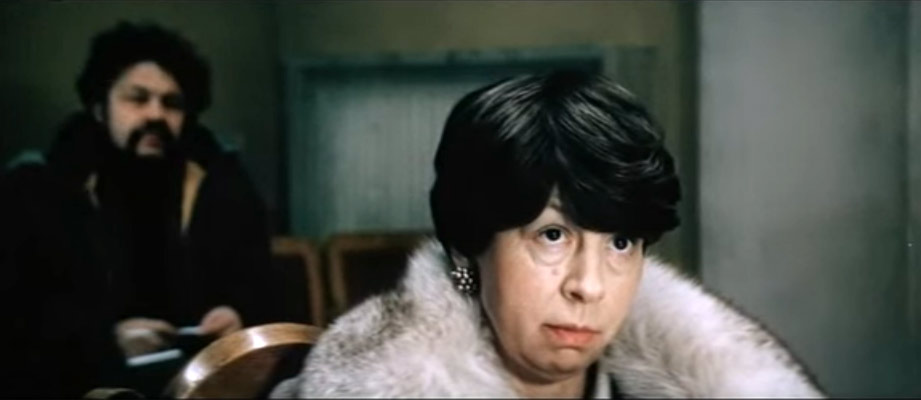
In 1999, the body of actress Vera Ivleva was found buried three months after she went missing. The killer was never found. Presumably, she was hit by a car, trying to hide the traces of the crime, the driver buried the actress's body. Vera Ivleva's murder remains a mystery.
19. Mikhail Krug
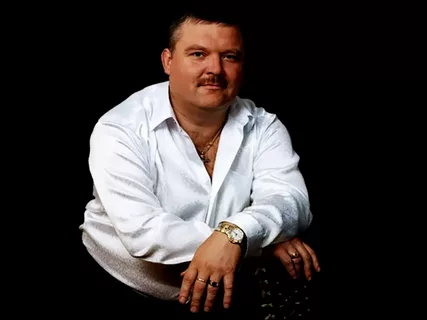
The murder of Russian chanson star Mikhail Krug has remained unsolved since 2002. The singer was wounded in his home. He died in the hospital. The attack on the house was presumably committed for the purpose of robbery.
20. The murder of Pyotr Yaroshevich
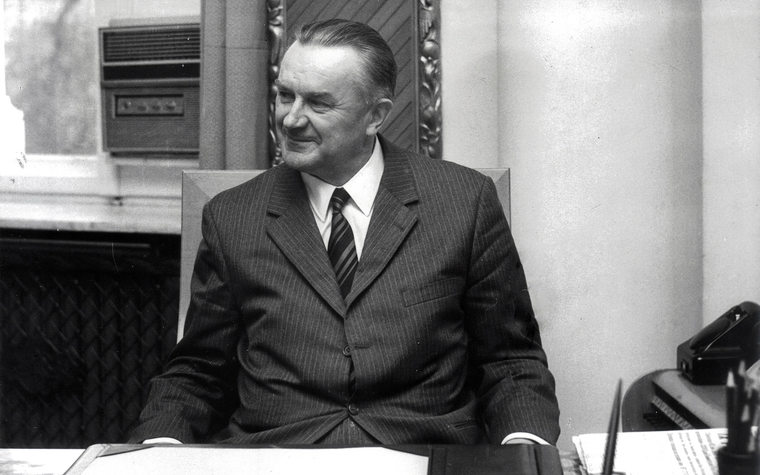
In 1992, the former Prime Minister of Poland was murdered in his home. We are talking about Piotr Jaroszewicz. The murdered man was eighty-two years old. The politician died under mysterious circumstances, his killer is unknown.
21. The Murder of Viktor Polyanichko

The statesman Viktor Polyanichko was killed in 1993. Along with him, military leader Anatoly Koretsky and senior lieutenant Viktor Kravchuk were killed. This murder was classified as a terrorist act. It is unclear who the killer was, this case remains open. The murder of Viktor Polyanichko was classified as a terrorist act.
22. Murder of Olav Palme

In 1982, Swedish politician Olaf Palme was re-elected for a second term as Prime Minister. He was killed along with his wife while they were returning home from the cinema. The reason for the murder and who killed the Prime Minister is still unknown.
23. Jack the Ripper
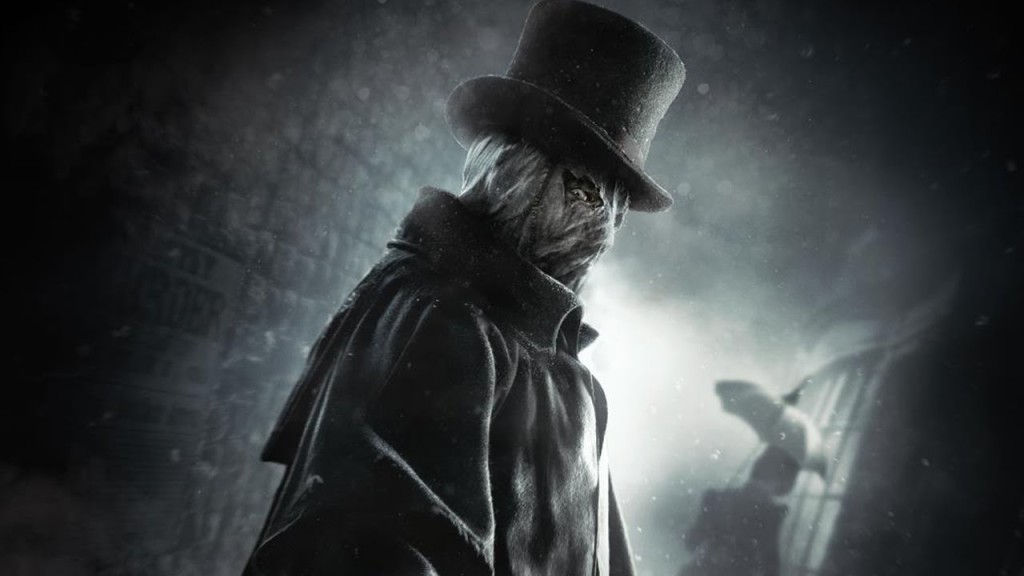
In the late nineteenth century, five women who were prostitutes were murdered in London. The killer strangled the victims, cut their throats and removed their internal organs. For this, the criminal, who was never found, was given the nickname "Jack the Ripper". There was not even a prime suspect in this case, some aspects are debated to this day. Jack the Ripper is a bloody legendary killer.
24. Abraham Lincoln
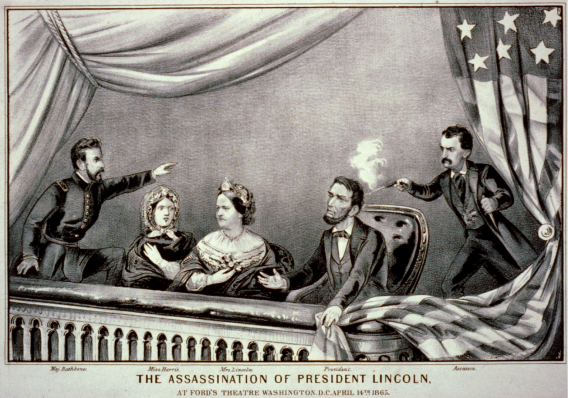
Abraham Lincoln, the 16th President of the United States, was shot dead in a theater box on April 14, 1865. He was 56 years old. The assassin, John Wilkes Booth, was a staunch Confederate who hated the president for his desire to free black Americans. He had been watching the president for a long time, and on April 14, his opportunity finally presented itself: during a performance, Lincoln's bodyguard went to a nearby saloon to get a drink, leaving the president defenseless. Booth escaped in the chaos, but was shot dead by police 12 days later.
25. James Garfield
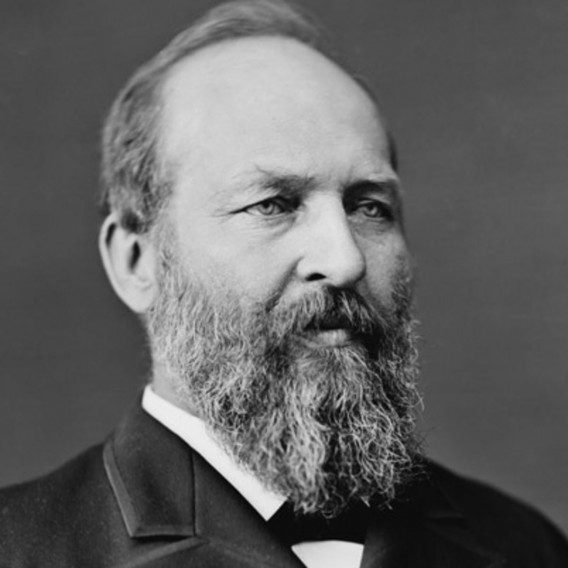
The 20th President of the United States, James Garfield, served only 200 days in office. His assassin, lawyer and preacher Charles Guiteau, campaigned hard for Garfield in the election, hoping to get the ambassadorship. But when he failed to achieve what he wanted, he decided to kill Garfield in anger. On July 2, 1881, he followed the president on a walk through Baltimore, and finally approached him, firing two shots at point-blank range into his back. Garfield died in the hospital two months later from blood poisoning. Guiteau was captured, convicted, and hanged in June 1882.
26. Robert Kennedy
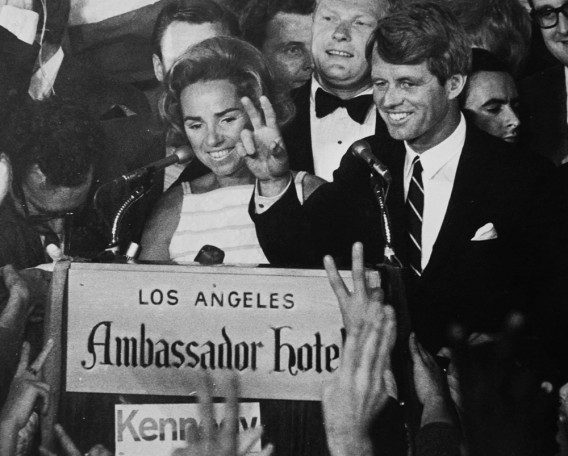
Senator Robert Kennedy, the brother of the assassinated president and a Democratic presidential candidate, was shot to death at the Ambassador Hotel in Los Angeles on June 5, 1968. The senator had just won the California primary, but winning the presidential race was a demanding endeavor, with speeches coming one after another. After meeting with supporters at the Ambassador, Robert Kennedy, despite warnings from security guards, decided to take a shortcut through the hotel kitchen. There, he was ambushed by Palestinian immigrant Sirhan Sirhan, who shot Kennedy three times at point-blank range. The senator died in the hospital a day later, and the assassin was sentenced to life in prison, which he is serving to this day.
27. Faisal ibn Abdul Aziz
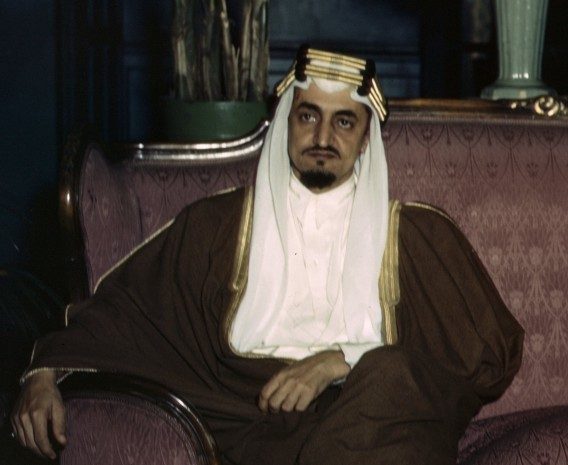
King Faisal ruled Saudi Arabia from 1965 to 1975. On March 25, 1975, he was shot dead by his nephew, Faisal bin Musaid. Returning from a trip to the United States, Faisal bin Musaid went to greet his uncle. The king rose from his throne to greet him – and was immediately shot twice in the head. The king died instantly. The nephew was tried, found guilty, and hanged in Riyadh a few months later.
28. William McKinley
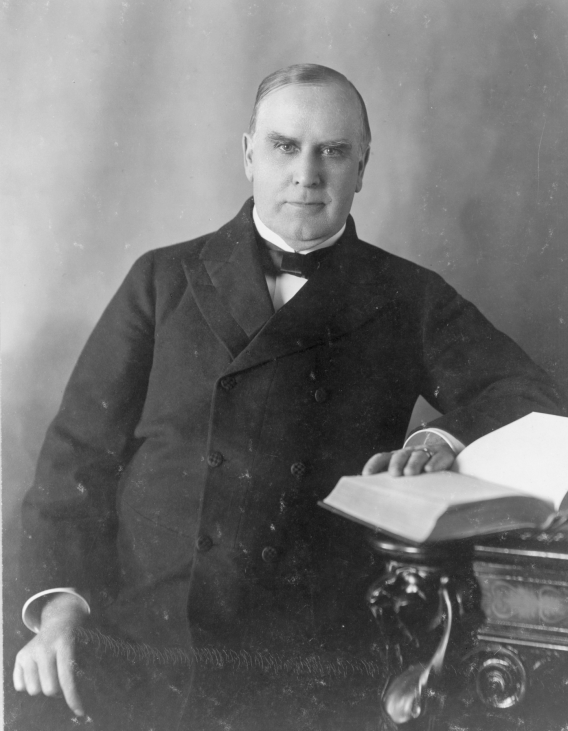
William McKinley became the third American president to be assassinated during his term. McKinley loved to appear in public and was reluctant to accept security. This gave a chance to the unemployed anarchist Leon Czolgosz, who decided to kill the president as a representative of the exploiting class. On September 6, 1901, in the concert hall at the World's Pan-American Exposition in Buffalo, McKinley approached Czolgosz to shake his hand – and was shot point-blank. Czolgosz was executed in the electric chair, and since then the security of US presidents has been provided by a special secret service.
29. Harvey Bernard Milk

Harvey Bernard Milk became the first openly gay person elected to public office in California, serving on the Board of Supervisors. His unsuccessful opponent in the election, conservative Dan White, who hated gays in general and Milk personally, decided to take matters into his own hands and shot Milk. The murder occurred on November 27, 197, almost a year after Milk took office. A biopic of Milk was subsequently made by none other than the intellectual and unbridled Gus Van Sant.
30. Mahatma Gandhi
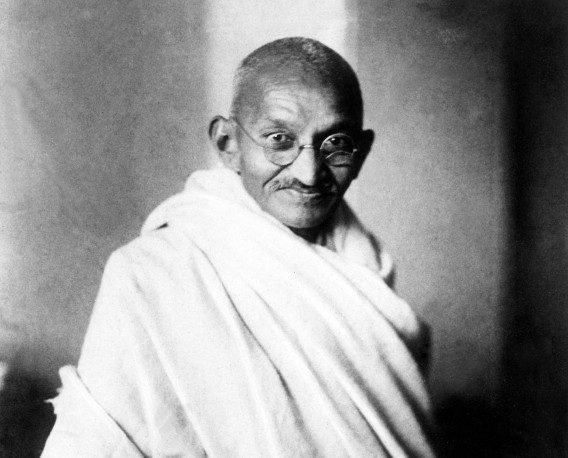
There were two attempts on Mahatma Gandhi’s life, but it was only the third time that the assassin achieved his goal. On January 30, 1948, as Gandhi was walking to a temple to pray, the assassin approached him in a crowd of worshipers and fired three shots at point-blank range. One of them was fatal: the bullet hit the heart. Gandhi died on the spot, having only managed to make it clear that he forgave his killer. It turned out to be the nationalist Naturham Godse, who believed that Gandhi’s policies were leading to India’s excessive subordination to the interests of Pakistan. Although Gandhi forgave Godse, the court did not: he was hanged in November 1949.
31. John F. Kennedy

The Dallas shootings of November 22, 1963, are perhaps the most studied public assassination in world history. Dozens of journalists covered Kennedy's trip to Dallas, having just announced his upcoming bid for a second term. The car moving, the president's body jerking and falling limply back in the seat, Jacqueline Kennedy picking up pieces of her husband's brain from the bumper of the car - all of this was meticulously recorded on film. But who was behind the shooter, Lee Harvey Oswald, and even whether it was Oswald who fired the fatal bullets - this remains one of the great mysteries of modern history.
32. Lee Harvey Oswald
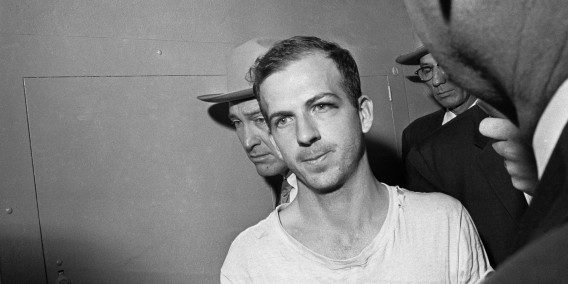
Lee Harvey Osborne outlived John Kennedy by only two days. On November 24, 1963, while being transported from the Dallas Police Department to prison, he was shot with a single shot by Dallas resident Jack Ruby. Ruby explained his actions by his personal hatred for the killer; the court sentenced him to death, but the verdict was appealed. In the midst of the trial, Ruby died of lung cancer, from which he had suffered for a long time, becoming another enigmatic page in the mysterious story of Kennedy's assassination.
33. Georgy Markov
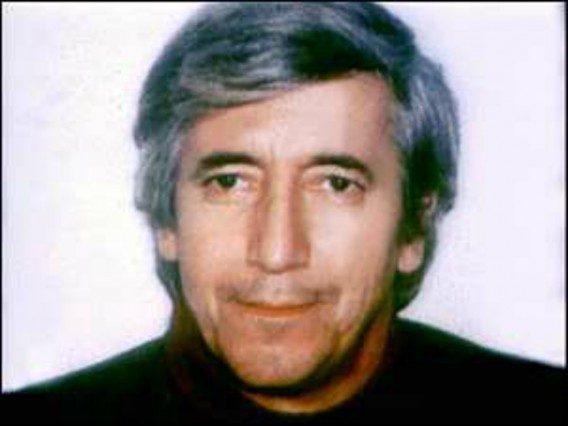
Bulgarian writer and dissident Georgi Markov, who fled to England in 1969, was murdered in London on September 7, 1978. The killer is believed to have been a Bulgarian KGB agent, although he was never found. Markov's death became widely known because of the method of the murder: a passerby on the street accidentally stabbed him in the leg with an umbrella, thus injecting a capsule of poison under Markov's skin, from which Markov died a few days later. This incredible plot was subsequently used in the scripts of several films, from serious political detectives to the funny French comedy "Umbrella Injection".
34. Martin Luther King Jr.
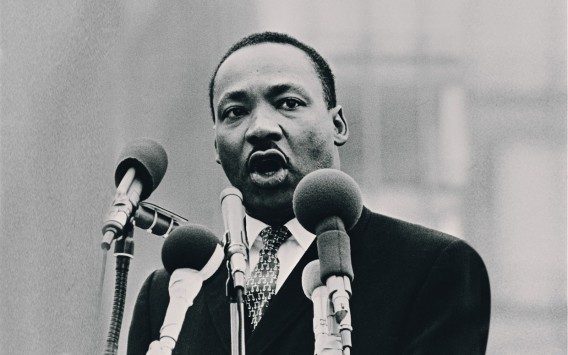
A preacher, lawyer, and brilliant orator, Martin Luther King was one of the leaders of the all-American movement against racial segregation. He was shot dead on April 4, 1968, in Memphis. King was standing on a second-floor balcony when a sniper's bullet hit him in the neck. An hour later, 39-year-old King died. The killer was James Earl Ray, a convinced racist with a criminal past. Ray himself claimed that he was just a pawn in a larger conspiracy, but no evidence was ever found, although King's relatives long remained convinced that the American government was involved in his death.
35. Alexander Litvinenko
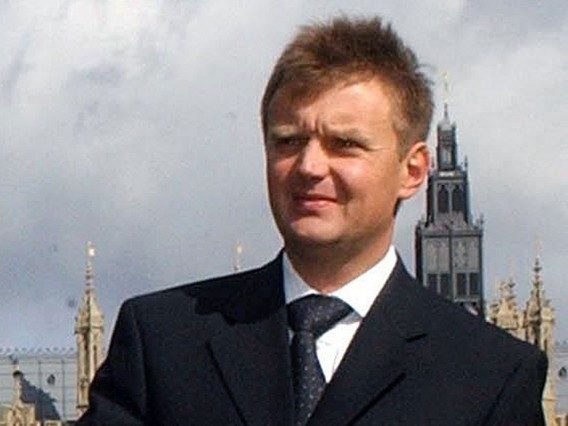
Alexander Litvinenko, a former secret service officer who fled Russia for England, became the Georgy Markov of our time. He died in November 2006 in a London hospital from acute poisoning with symptoms of radiation sickness. The investigation found that several weeks before his death, Litvinenko had been drinking tea in a London hotel, where a lethal dose of radioactive polonium-210 somehow ended up in his cup. The investigation into Litvinenko’s case is still ongoing, and “tea with polonium” has long since become a famous Internet meme.
36. Malcolm X
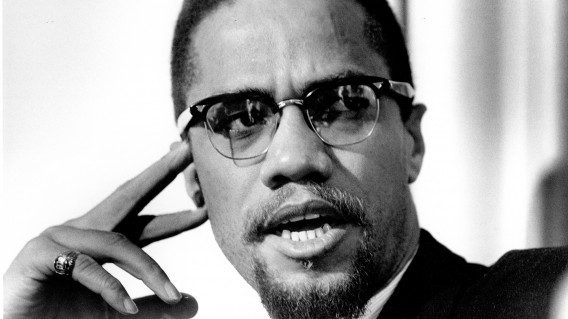
A well-known advocate for the rights of the black population in the United States, Malcolm X was shot 21 times at point-blank range at the beginning of a speech to members of the Organization of African American Unity at the Audubon Ballroom in New York. Members of the extremist organization of the black population of America, the Nation of Islam, claimed responsibility for the murder. Malcolm was once a member of it, but later, disappointed in the ideals of black racism, he left the Nation of Islam. Malcolm X was no less popular among black Americans than Martin Luther King: several tens of thousands of people came to bid farewell to him.
37. Benazir Bhutto

The only female Prime Minister of Pakistan in history was killed after returning to the country from many years of exile. When Bhutto, who served as Prime Minister in 1988-1990 and 1993-1996, announced that she would run for office again in 2007, she was immediately assassinated. The first attempt took place on October 15, 1993. More than 130 people died, but Bhutto survived. Finally, on December 27, 2007, when Bhutto was riding in an open car greeting voters, a terrorist opened fire on her, simultaneously detonating several explosive devices. More than 20 people died on the spot, Bhutto died an hour later on the operating table. The killer was never found, although no one doubts that he belonged to one of the radical Islamic groups.
38. John Lennon
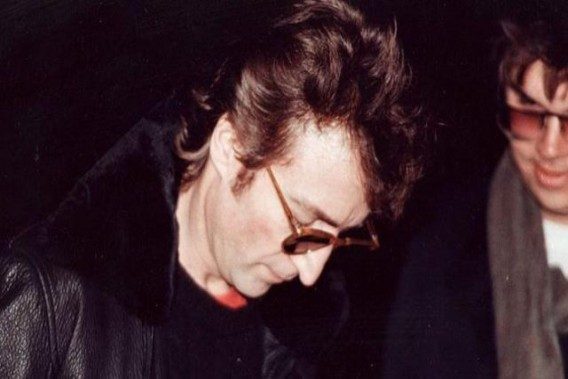
On December 8, 1980, John Lennon was walking home from the studio with Yoko Ono when he was called out to near his home. Lennon turned around, and the assassin, Mark David Chapman, fired five bullets at him. Four hit their target, and John Lennon died of severe blood loss within minutes. Chapman attributed his actions to a desire for fame; he showed clear signs of mental problems, but he was found sane and sentenced to life imprisonment. Over the years, Chapman has applied for clemency eight times, but all have been rejected.
39. Al Capone
This is one of the main founders of organized crime in the United States of America during the difficult periods of the Great Depression and Prohibition. It was from his hand that such a concept as racketeering appeared. However, perhaps the most famous crime of this man is the so-called St. Valentine's Day Massacre. Capone came from a family of Italian immigrants who lived near New York. It so happened that the whole life of their son was closely connected with the Italian mafia. He was born in 1899, the ninth child in the family, and from childhood he showed an easily excitable, aggressive character. Having entered school, he constantly clashed with classmates, and in the sixth grade he even attacked a teacher with his fists. After this incident, the boy dropped out of school and got involved with a gang, which later became part of the famous group in New York "Five Points". In just five years, more than 500 ordinary and not so ordinary gangsters were killed in shootouts involving the group.
The boys were mostly involved in illegal card games and extortion, and to cover up the situation, Capone worked as a bouncer in the club and played pool professionally. Despite his short stature, he seemed like a thug to everyone, thanks to his stocky build. In the pool hall, he also earned a scar on his face, insulting the sister or wife of some ex-convict. But Capone himself was always ashamed of this story and came up with another: that he had the scar from the battles in World War I, although in fact he had not even served in the army, let alone the war. By the age of 18, the police already suspected Capone of many offenses, including murder.
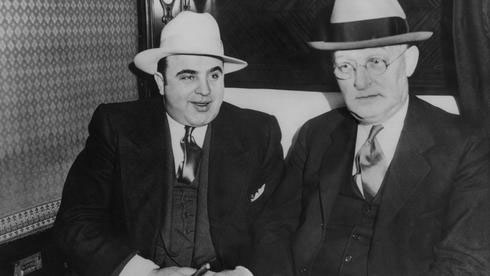
At the age of 18, Al Capone left New York and went to conquer Chicago. In Chicago, Alfredo almost immediately became a pimp in some brothel. It should be noted that at that time in the gangster environment this was considered very humiliating, but Capone turned out to be enterprising and turned a low-grade establishment into a successful business, where in addition to the brothel there was also a casino, a betting shop and a beer bar. Thus, having earned a huge amount of money, Alfredo became the main one in the Chicago criminal world. And one of his first innovations was racketeering. In other words, entrepreneurs had to pay him for a "quiet life" from their profits. In return, racketeers provided protection from representatives of other gangs, and sometimes even from the police. There was no way to refuse: almost always, unwanted people were eliminated.
One of the most terrible features of the "rule" of this mafioso is the constant brutal showdowns between gangs, often leading to the death of participants. Capone's goal was always to eliminate competitors. The largest series of gangster murders became the famous "St. Valentine's Day Massacre". On February 14, 1929, armed men of the mafioso broke into the garage of another gang. They thought it was the police and lined up along the wall, where they were immediately shot. Similar shocking cases took place more than once, but for a long time it was not possible to prove that this was the work of Capone. Only in 1931 was it possible to pin him down and put him behind bars. True, he did not serve the full term, but his health was seriously undermined and soon after his release he died in his country house from a stroke.
It was Al Capone who came up with the idea of replacing standard gangster pistols with machine guns and submachine guns.
40. Andrei Chikatilo
The most notorious crimes in the USSR were committed by the serial killer Andrei Chikatilo. At the time, they shocked the entire country, and many still consider him the most terrible criminal not only of the twentieth, but also of the 21st century. Each of his crimes is so cruel that it freezes the blood. During the investigation, the maniac was kept in solitary confinement, otherwise he would have simply been torn to pieces: people like him become outcasts not only among law-abiding citizens, but also among criminals. How did it all begin, how did an ordinary village boy end up like this? Chikatilo was born into a poor family, but since childhood he aspired to power, dreamed of working in the Kremlin. At school, he was shy and whiny. His rapist tendencies manifested themselves in his adolescence, when an incident occurred with one of the girls he knew.

His brain was offered for sale for big money by various research scientists in order to study the phenomenon of the monster, to have access to teenagers, to regularly go to training camps and competitions. Later, he also chose professions related to children - sometimes a teacher, sometimes an educator. His former students recalled at the trial that he periodically made indecent hints and touched them in intimate places, often went into the women's rooms when the girls were undressing before bed. He masturbated through his pants, everyone noticed this, and teenagers even teased him for this. All these incidents led to scandals, because of which Chikatilo lost his job.
He took four courses in Marxism-Leninism, wrote articles for newspapers on moral topics. And gradually turned into a monster, but did not find the strength to turn to a psychiatrist about this, to admit his weakness. Starting in 1982, they began to regularly find the torn, cut up corpses of young girls and boys with gouged out eyes: the maniac could not withstand their gaze. At home, with his family, he was still modest and quiet. The most experienced detectives were thrown into investigating the case of murders in the forest belt.
Despite all his mental deviations, Andrei Chikatilo had faith in his high destiny.
The search lasted for several years, and many other cases unrelated to Chikatilo were solved in the process. The end of the story took place in 1990. That year, the maniac killed the most people – six. A week before the last murder, he caught the eye of a police officer. They checked his documents and let him go, but the sergeant remembered that the man’s last name began with the letter “Ч”. They organized surveillance of Chikatilo, and in November 1990, he was finally taken into custody. For ten days, the killer denied his guilt, but then began to confess, and wrote off all his terrible actions to impotence, considering this a strong argument for justification. He was sentenced to death. In Ukraine, which was then part of the USSR, execution was a bullet in the back of the head and was, as in Russia, an exceptional measure of punishment.
41. Bonnie and Clyde
The world's most famous criminal couple in love. Bonnie Parker was born in Texas to a bricklayer's family, and at the age of 15 she married a petty criminal named Roy Thornton in Dallas. He soon disappeared and never saw his wife again, although she wore her wedding ring until her last day. He only learned of her death while sitting in prison. At the age of 19, Bonnie met Clyde, who was then 21. By the time of this meeting, he was already a hardened criminal, specializing in robbing small stores. In 1928, he became the leader of a gang of criminals.
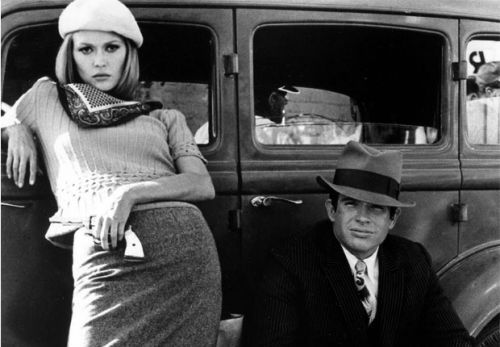
The very next day after they met, Bonnie and Clyde began living together. He taught her how to handle a gun and often took her on "jobs". Having been caught and served time in prison, Clyde left it in 1932 as a completely different person. This change occurred after he beat to death another prisoner who had committed sexual violence against him. There are many rumors about the love between Bonnie and Clyde: some say that they had contact not only with each other, but with the entire gang. Others believe that Clyde was gay, so this relationship was platonic. One way or another, acquaintances said that love shone in the eyes of both.
Soon the gang had not only committed numerous robberies, but also thirteen murders. Bonnie and Clyde lived like vagabonds: they slept on the streets, ate what they could get, drank a lot of alcohol. At the same time, they felt like fighters for justice: during the Great Depression, it was considered almost a virtue among members of the criminal world to take money from those who had at least a little of it. Their robberies could not be called large, but they were always loud and spectacular, and often unjustifiably cruel: for example, they once killed a store owner for only $28.
They were very happy to read newspaper articles about themselves. Bonnie even took up PR: she started sending editors their photos with guns or against the backdrop of stolen cars. The famous criminals became coveted prey for the FBI, and a large sum was put on their heads. Other crime bosses were also against the gang, including a group led by the famous Pretty Boy Floyd. In 1933, the gang was ambushed. Some were wounded, some were killed, and one of the bandits was caught and executed. Bonnie and Clyde moved to Texas to hide with relatives there, but one of their relatives turned them in to the police.












